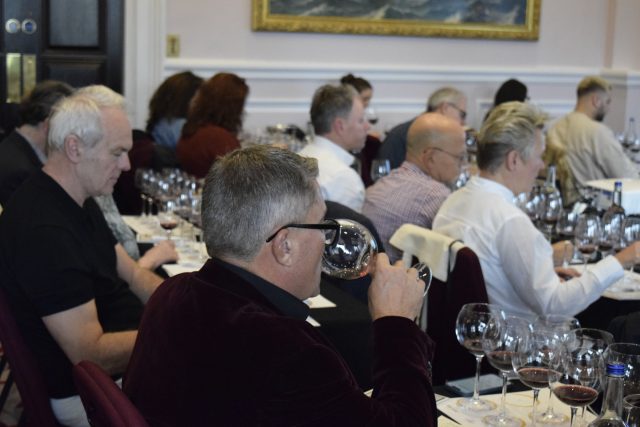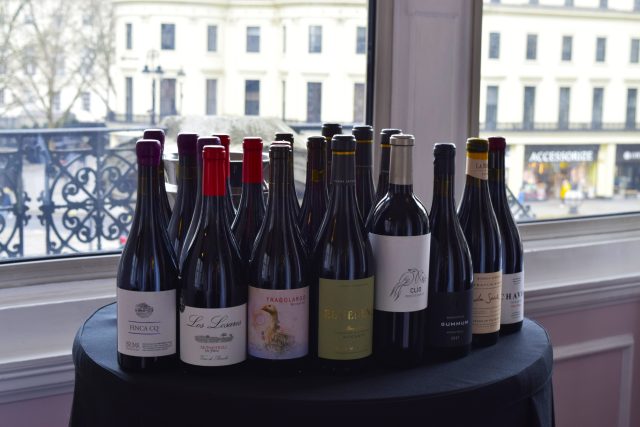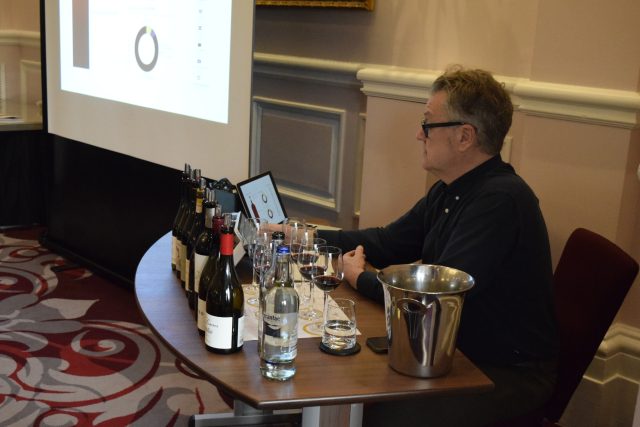Monastrell España shows the grape’s versatility across five regions
The joint project between five Spanish DOs visited London last week, with Monastrell España emphasising the range of wines Monastrell offers.

Members of the UK trade were treated to a whistle-stop tour of Monastrell, as five denominations collaborated on a tasting and masterclass in London last week. Monastrell España is the name of the association of five Spanish denomination, each producing high-quality examples of the variety. Alicante, Almansa, Bullas, Jumilla and Yecla have been working on the project since 2019.
For the London masterclass, Peter McCombie MW explored the history, characteristics and market proposition of the grape . He then led attendees in a tasting of eight wines spanning the appellations.
McCombie emphasised the grape’s long history, with the first documented use of the name dating to the 14th Century. As similarities to the word ‘monastery’ might indicate, the variety has its roots in monastic wine industries.
The variety reached France in the 16th Century, where it is known as Mourvedre. Its coverage then grew significantly in Spain after phylloxera, susequently becoming the main variety in Murcia, Castilla La Mancha, Valencia and Alicante.
Although international success in France, Australia and the USA helped bolster its reputation, Monastrell has remained a predominantly Spanish proposition. Indeed, Spain now holds around 85% of the world’s plantings.
Monastrell España, as part of its messaging, is demonstrating why the variety thrives in Spanish terroirs. For McCombie, there is a degree of natural suitability: it needs warm climates, is wind resistant and recovers well from frost. In Spain, and as producers respond to the threat of climate change, these attributes are useful.
However, the variety also shows the character necessary for making high-quality wines. Early in the presentation, he referenced its high phenolic content, and this naturally flavourful quality was a recurring theme. However, it was evidenced in a number of ways. For instance, McCombie stressed that Monastrell is capable of producing both juicy, young wines that have undergone carbonic maceration and more ambitious age-worthy examples.
Partner Content

The eight wines presented therefore offered a wide variety of styles. Encompassing all five denominations, from the powerhouse region of Jumilla to the small municipality of Bullas, the wines showed Monastrell’s wide potential. On show were examples aged in oak, steel and concrete, as well as a mix of youthful and developing wines.
Although McCombie addressed the stereotype that Monastrell has a meaty or gamey character, the selection proved that no single style dominates Monastrell production. Although not part of the tasting, he reminded attendees of the many rosé and sweet wines that can also be made in these denominations.
Reflecting after the tasting on the grape’s market proposition, McCombie recognised that the UK has long associated Spanish wine with big, rich reds. However, he highlighted that the tasting showed the UK trade was “open to variation on a theme” in trying new varieties. Moreover, he was optimistic that Monastrell is starting to break through in reputation as more than just a blending grape.
He also emphasised that, in practices such as spontaneous fermentation or widespread sustainable viticulture, these denominations are already meeting consumer trends and expectations. “They show authenticity,” he commented, “but they are not backward looking.”

Related news
All the medallists from The Rioja Masters 2025




